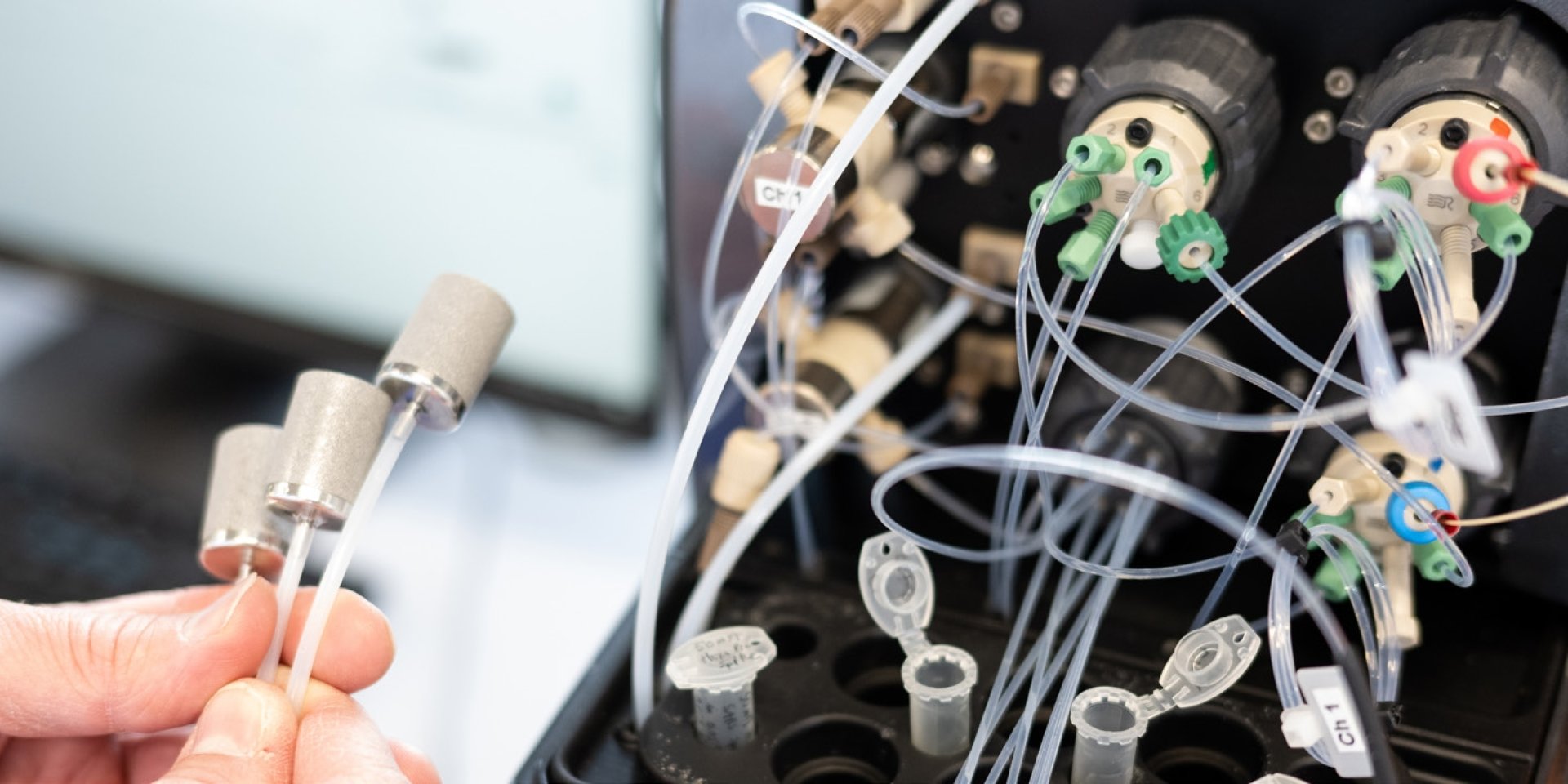Development of analytical test kits and specific filters for endotoxins - part I

EUREKA / CTI project [2015–2018]
Application Title: ETpure
Project ID : 9893
The project aims the development of analytical test kits to quantify endotoxins in liquid formulations and the development of endotoxin specific filter materials to purify liquid formulations from endotoxins in biotech process development and production.
Those products will be developed for biopharmaceutical process development and production, where this test kit is necessary to develop, control and validate the production process. Endotoxins (ET) have a complex chemical structure, as a lipid part and a complex antennary carbohydrate part; they show a high diversity from organism to organism and even cell to cell.
ET stick strongly to surfaces, aggregate to micelles, making their identification, quantification and purification / final product purification a real challenge. Those ET, when entering in the blood stream have a systemic inflammatory reaction, even after sterilization. For this reason, health authorities regulate the manufactures of biotechnological products for human consumption that the final product must be free of ET at very low concentration levels to avoid serious health problems. Also high ET levels in the air of the working environment in intensive animal farms and in the textile industry are a serious problem, and common assays do not exist. This last application will not be part of this project.
Today, the purification of pharmaceutical products produced by gram negative bacteria from ET is a tedious and expensive multi step process due to the "zwitterionic" physico-chemical properties of the ET. Process development with respect to ET removal is difficult and expensive. In the frame of the project, we propose the development of cost efficient, selective media combined with micro-filters, which can specifically remove ET with high efficiency in liquid formulations applicable in process development and pharmaceutical production. These filters will be developed based on actual know how / portfolio and patented micro-filtration system, in a one-step purification process, not available today (FILTROX, CH). Since no standards for ET from different bacterial sources are available today at an affordable price, ET from different gram-negative bacteria will be purified and chemically characterized. Purified ET is essential to allow the testing of the filters in terms of efficiency and selectivity and will be available in the test kit.
In 1991, the FDA (USA) approved a biological reagent (LAL, Limulus Amebocyte Lysate, based on horseshoe crab blood) for ET testing in pharmaceutical formulations. However, this sensitive biological assay has a huge error (about 50 % false responses - American Pharmaceutical Review Aug 28, 2014), is responding with a different sensitivity to ET from different bacteria / matrices, and is time consuming. The expensive cartridges (ca. 50€ per assay), have a small concentration range (for example 0.1 to 0.2 ng /mL) which makes the test, especially in process development very expensive. Other than bacteria specific, universal alternatives are not available. We propose the development of kits for ET quantification based on common capillary electrophoresis (CE) instrumentation. All ET contain rare and common building blocks (BBs) to a similar percentage. After quantitative hydrolysis of the ET, these BBs can be quantified by CE in the µg / ml range using a ready to use buffer kit from the Belgium partner ANALIS R&D (result: ET quantification kit for filter development, process development & air control). In the lower ng / ml range BBs will be quantified after derivatization with a fluorophore followed by CE separation and sensitive fluorescence detection (ET kit for biopharmaceutical quality control). The workflow will be atomized, hydrolysis, separation and detection conditions will be developed.
Results will be validated by comparison to the official FDA LAL test for different bacteria and ET. Purified and characterized ET standards for different bacteria will be part of the ET-kits. The cost of one ET assay will be in the 3 to 5 € (end-user) range, the test will be fast, simple, applicable with a very similar response to all ET, matrix effects are negligible (due to separation involved), also the strong sticking of the ET to matrix parts is circumvented (due to hydrolysis). In a joint study by ANALIS R&D (Suarlée, BE) and HES-SO (Sion, CH) the feasibility of the suggested approach was proven for ET from two different bacterial sources. In June 2012, the FDA issued a Guidance for industry where they withdrew the 1987 LAL Guidance. In their Guidance they stated that an alternative assay to those in the USP may be used.
